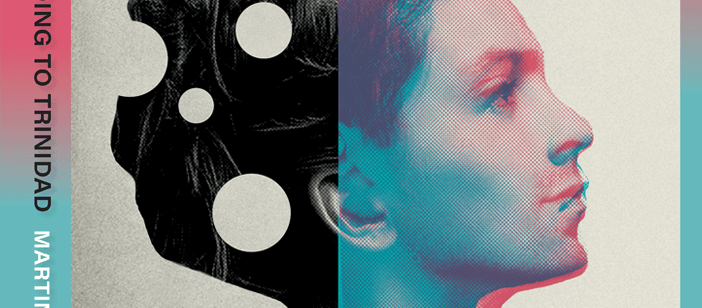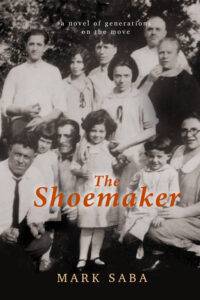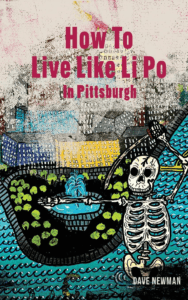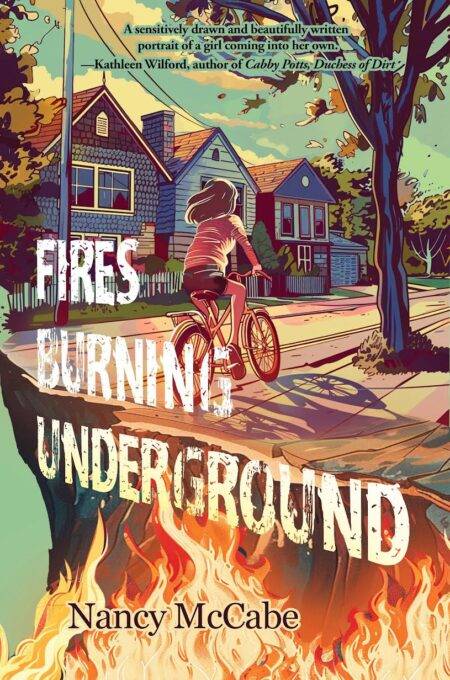Transgender lives and voices come alive in this new book about the forgotten gender crossroads of Trinidad, Colorado.
From the Publisher: “For more than four decades, between 1969 and 2010, the remote former mining town of Trinidad, Colorado was the unlikely crossroads for approximately six thousand medical pilgrims who came looking for relief from the pain of gender dysphoria. The surgical skill and nonjudgmental compassion of surgeons Stanley Biber and his transgender protege Marci Bowers not only made the phrase ‘Going to Trinidad’ a euphemism for gender confirmation surgery in the worldwide transgender community, but also turned the small outpost near the New Mexico border into what The New York Times once called ‘the sex-change capital of the world.’
The full story of that nearly forgotten chapter in gender and medical history has never been told ― until now. Award-winning writer Martin J. Smith spent two years researching not only the stories of Trinidad, Biber, and Bowers, but also tracking the lives of many transgender men and women who sought their services. The result is Going to Trinidad, which focuses on the complicated pre- and post-surgery lives of two Biber patients ― Claudine Griggs and Walt Heyer ― who experienced very different outcomes. Through them, Smith takes readers deep into the often-mystifying world of gender, genitalia, and sexuality, and chronicles a fascinating segment of the human species that’s often misunderstood by those for whom gender remains a mostly binary male-or-female equation.
The stories of Trinidad’s surgeons and transgender pilgrims provide an important opportunity to better understand the millions of complex individuals whose personal struggle is complicated by today’s quicksand of cultural pressures and prejudices. More than six thousand transgender men and women left Trinidad hoping that hormone therapy and surgical relief was the right prescription for their pain. For most it was, but not for all, and their experiences offer important and timely insights for those struggling to understand this sometimes confounding human condition…”
“For generations of transgender people, ‘Trinidad, Colorado’ was code for ‘sex-change capital of the world.’ Martin J. Smith brings this somewhat secret history to a wider audience, in an expansive, entertaining narrative chock full of interesting people and previously untold stories…” –Susan Stryker, author of Transgender History: The Roots of Today’s Revolution
About the author: Martin J. Smith, a veteran journalist and former senior editor of the Los Angeles Times Magazine, is the author of five crime novels and four previous nonfiction books. He has won more than fifty newspaper and magazine writing awards, and his novels have been nominated for three of the publishing industry’s most prestigious honors, including the Edgar Award, the Anthony Award, and the Barry Award. For more information, visit martinjsmith.com. You can also connect with Martin J. Smith on Facebook, Twitter, and Instagram. Connect with Martin J. Smith on Facebook, Twitter, and Instagram.
CHAPTER ONE
Dear Dr. Biber…
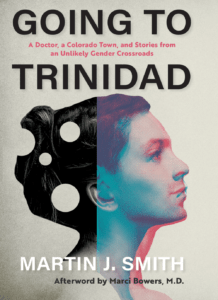 On December 12, 1990, a law-office secretary and part-time English graduate student in Rancho Cucamonga, California, sat down to write a letter that had been nearly four decades in the making. Her name was Claudine Toni Griggs.
On December 12, 1990, a law-office secretary and part-time English graduate student in Rancho Cucamonga, California, sat down to write a letter that had been nearly four decades in the making. Her name was Claudine Toni Griggs.
The diminutive Griggs had lived as a woman for sixteen years, since the summer of 1974, though she’d been born and spent the first twenty-one years of her life as Claude Anthony Griggs. So complete had been her outward transformation from male to female that few of her friends and professional colleagues suspected. Her physical stature—just five-feet-five and one-hundred-thirty pounds—gave her an advantage. “All I had to do to look sexually ambiguous was shave what little facial hair I had,” she says. Plus, for seventeen years she’d been taking hormone treatments that eased her even further toward the female end of the gender spectrum. Her transition had stalled short of the next logical step, surgery to transform her male genitalia into that of a female, but by early December 1990 Griggs had made peace with that decision.
During a routine appointment with her endocrinologist less than two weeks earlier, though, her doctor had asked a direct, provocative question: “When are you planning to have surgery?”
“Never,” she replied. “I’ve learned to live without it.”
The doctor pressed. “Why don’t you want to have the surgery?”
When she’d explored the possibility in the 1970s, Griggs told him, she’d found the attitudes of the doctors she approached off-putting. Her half-dozen encounters with various surgeons, medical centers, psychiatrists, and others left her feeling they were “less than knowledgeable, sometimes less than competent and less than ethical.” In her journal, she later allowed herself to remember those difficult encounters: “If you do everything we tell you, when we tell you, and convince us you will be successful as a woman (their definition of ‘success’), then we will consider, after keeping you under our scrutiny for several years, whether to authorize final sex-reassignment; and bear in mind, we rarely approve surgery (no alternative was ever mentioned). On one occasion, I met with a slightly more dangerous attitude: ‘If you’ve got the money, I’ll do surgery—immediately.’”
Once, in 1977, she’d gotten as far as scheduling the operation—only to find out the chosen surgeon lost his medical license just weeks before he was set to put her under. “I was told by another physician that ‘he had butchered a couple of people,’” Griggs later recalled. “To this day, I do not believe I have completely recovered from the experience.”
The endocrinologist shook his head, assuring Griggs that things had improved. And despite her anxiety about revisiting the idea, she couldn’t escape that thought as she left his office that Saturday morning. A “familiar and terrible emotional storm” began to swell, and she found herself crying during the drive home. Five days later, by phone, she asked the doctor to help her identify and locate one of the specialists he’d suggested might help. The doctor referred her to a nun in nearby Orange County who he said had experience in connecting transsexuals with a doctor who could do the type of surgery she was seeking. Although they never met, Griggs today believes the nun was herself a transsexual woman and was prepared to make a referral based on personal experience.
Griggs made the call. After a phone consultation in which Griggs answered questions about how long she’d lived as a woman, whether she was taking hormones, and if she was in counseling, the nun simply said: “Most patients go to Dr. Biber.”
Who?
Griggs was given contact information for an office in a place that sounded like the middle of nowhere, a small town two hundred miles south of Denver near the New Mexico border that the New York Times many years later would describe as “the sex-change capital of the world”: Trinidad, Colorado.
“I had never heard of Dr. Biber or Trinidad until I was referred to his office, and I really didn’t want to travel so far for the surgery,” Griggs says. “But I wanted the procedure badly enough to do it nonetheless.”
Griggs’s improbable advisor, the Orange County nun, was correct. Since 1969, Dr. Stanley H. Biber had been specializing in something that few surgeons dared attempt, and he had been doing so in perhaps the unlikeliest place on the planet. Trinidad, a small town along the southern Colorado-northern New Mexico border, once was a coal-mining and ranching outcrop that today is home to only about 8,000 people. While it has a colorful history and maintains a charming downtown, Trinidad has always been the kind of place where road-numbed motorists traveling Interstate 25 between Denver and Santa Fe exit just long enough to top off their gas tank, refill their go-cups, and use the bathroom. Trinidad’s only hospital—serving a population that’s more than fifty percent Hispanic—still has only twenty-five beds. Biber had performed the first of more than six thousand gender confirmation surgeries there in 1969 during a career that eventually would last until he was in his eighties.
The self-assured surgeon—himself a bantam at five-five, but who once was a bodybuilder—had honed his surgical skills as chief surgeon of a MASH unit during the Korean War and spent the early years of his career focused on standard appendectomies, tonsillectomies, and C-section births. But one day a social worker and personal friend asked a question at the end of an otherwise routine appointment: Would Biber consider performing a delicate surgery?
“Of course I can do your surgery. What do you want done?”
His visitor explained that she was a transsexual woman.
“What’s that?” he replied.
At the time most US surgeons had heard of what then were called sex-change operations, but few had ever performed one. Only thirteen years had passed since the phrase “sex change” first entered the American lexicon when Bronx GI George Jorgensen traveled to Denmark to become Christine Jorgensen. But Biber never lacked for confidence and began researching the idea. He consulted a doctor in New York who’d performed the male-to-female surgery, snagged some hand-drawn diagrams from Johns Hopkins, and without informing his bosses at the then Catholic hospital, agreed to give the experimental operation a try. It was the beginning of a medical specialty he never could have imagined. As he began to refine his techniques, word got around. By the time Griggs first heard his name in late 1990, the phrase “Going to Trinidad” had become a familiar euphemism for undergoing that type of surgery among transsexual men and women around the world.
Griggs thanked the nun for the information, hung up the phone, and stared for several minutes at the “precious scribbling” on her notepad. “Don’t get too excited,” she remembers thinking. “Don’t get your hopes up until you have actually heard from this person.” She knew the screening process to qualify for the surgery could be rigorous, based on guidelines recommended for treating those with gender dysphoria. She also knew that only a handful of doctors in the world were capable of doing what she wanted done. It was a long shot, and she was afraid to imagine. For people like her, she later wrote, “the distance from faintish optimism to the brink of suicide can be very short.”
Six days later, according to her journal, Griggs sat down at her keyboard and began to type.
“Dear Dr. Biber,” she began, trying to sound businesslike and restrained. “I was referred to your office by Dr. Herbert Roberts, MD (a pseudonym Griggs created for UCLA’s Dr. Gerald Leve to mask his identity, among others, in her published journal). Dr. Roberts indicates that many of his transsexual patients have had surgery through your office. I have been under Dr. Roberts’s care for 17 years. Would you please send me information regarding your requirements for my having surgery through your office? If you need more information or have any questions, do not hesitate to call. Thank you, and I am looking forward to hearing from you. Very truly yours, Claudine Griggs.”
She recorded her feelings about posting the letter in her journal. Reflecting on the letter’s tone, she wrote: “I don’t want to sound as if I’m begging, because I have determined that I will not plead my case from my knees.” Of the quiet desperation that took hold once it was in the mail, she added: “I am afraid that the surgeon will respond too soon; I worry that he will not respond at all; I fear that he will die or retire before I can have the operation; I dread the surgery; I dread more a life without it.”
But the holidays were fast approaching, as were her master’s degree exams. During holiday meals of turkey, dressing, pie, and wine with family and friends, she idly wondered, “Will I be alive next Christmas? Will I be female?”
But for Griggs, it was all overshadowed by a question that speaks to the razor’s edge walked daily by so many who struggle with gender dysphoria: Which of those alternatives would better ease the pain?
Just three weeks later, Griggs found a letter in her mailbox postmarked Trinidad, Colorado, from the offices of Dr. Stanley Biber. She braced herself.
Biber’s response was, she says, “a pleasant shock.” His letter simply described the available services—genital surgery, breast implants, a tracheal shave to reduce the Adam’s apple, rhinoplasty—and their corresponding costs. It described the need for two psychiatric evaluations recommending her for surgery, and the need to write and forward to Biber a social history of herself. Also, Griggs was told that she must have been living full-time as a woman for at least one year before she would be considered. She’d already been living openly as a woman for seventeen.
The cost breakdown, payable in full at the time of the surgery, would be as follows: Biber’s surgical fee, $4,850; hospital cost, $5,435; anesthesiologist fee, $925. Breast implants were not included, but were available for an extra cost. Insurance would not cover the surgery, the letter noted, but Biber promised to refund appropriate fees if she made a successful claim against her medical insurer. It ended: “We will be glad to help if you can meet our requirements.”
Again, Griggs began to cry.
By January 21, 1991, less than two months after she first wrote to Biber, Griggs was ready to post another letter that included the requested “brief social history.” It was ten pages long, single-spaced, beginning with her birth as Claude in Millington, Tennessee, thirty-seven years before; her youth as the child of an Air Force and California National Guard “lifer”; her primary and secondary education in Southern California; her own year and a half as a communications specialist in the Air Force; her honorable discharge from the military after revealing her gender identity situation; her education and work history; and her generally unsatisfying sexual history with both male and female lovers. At the time, she wrote, she was involved in a four-year relationship with a woman named Carolyn, “the first relationship I have ever dared hope would be permanent.”
“I have asked myself why, if I am so happy, do I seek out a surgeon as I approach middle age; I can come up with only partial answers,” she explained to Biber. “I know that if surgery were impossible to attain, I could survive without it, bearing the discomfort of my present physical condition in much the same way (I think) I might bear up if I were paralyzed from the waist down and had to spend my life in a wheelchair. It would be a distressing situation, it would present some grave obstacles, it would be depressing, but it would not stop me from reaching out to work, study, learn, and just keep moving through life.”
She also enclosed a photograph and noted in closing that the cost would be manageable. “I may flinch when I withdraw the funds from my savings, but I can afford your fees.”
Three months later, on April 27, Griggs got the answer that both thrilled and frightened her. Biber accepted her as a “surgical candidate” and enclosed a four-page information packet called “The Trinidad Experience: Information About Your Hospital Stay (Male to Female Procedure).” But the decision was not yet final, Biber explained: “Though you have been accepted as a candidate, please bear in mind that I will make the final decision in my office the day prior to your scheduled surgery.”
Still, Griggs allowed herself some hope. Fifteen years after her first attempts to find a surgeon, she found herself reassured by this voice from the Colorado wilderness, by Biber’s professionalism and confidence, by the fact that “medical care is being offered almost routinely to a subdued transsexual who had given up looking for a remedy, resolving instead to accept the pain of existence—physically, legally, psychologically—in a kind of sexual limbo.”
For the first time in what seemed like forever, Claudine Griggs imagined the life she felt born to live.
This excerpt from Going to Trinidad: A Doctor, a Colorado Town, and Stories from an Unlikely Gender Crossroads by Martin J. Smith is published here courtesy of the author and should not be reproduced without permission.


